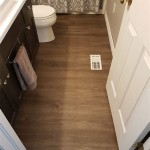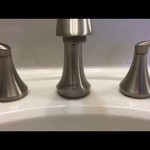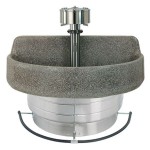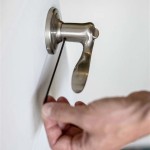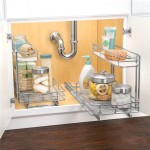Water Pressure in Bathroom Sink Suddenly Low: Causes and Solutions
A sudden decrease in water pressure in your bathroom sink can be a frustrating and inconvenient issue. It can disrupt your daily routines, make tasks like washing your hands or brushing your teeth more difficult, and even signal a potential plumbing problem. Understanding the possible causes behind this drop in pressure can help you troubleshoot the issue effectively and restore your sink's water flow to its normal level.
1. Clogged Aerator
The aerator is a small, usually metal, component attached to the faucet spout. Its purpose is to mix air with water, creating a smoother and more consistent flow. Over time, the aerator screen can accumulate mineral deposits, sediment, and debris, restricting water flow and reducing pressure.
To check if a clogged aerator is the culprit, unscrew the aerator and inspect it for any visible obstructions. If you find debris, you can try cleaning it with a small brush or soaking it in vinegar. If the aerator is severely clogged or damaged, it's best to replace it with a new one.
2. Partially Closed Shut-Off Valve
The shut-off valve for your bathroom sink is located under the sink or on the wall behind it. It controls the water supply to the sink. If the valve is accidentally closed or partially open, it can restrict water flow and result in lower pressure.
To check the shut-off valve, locate it and ensure it is fully open. If it's partially closed, open it completely and check if the water pressure improves.
3. Pipe Blockage
A blockage within the water supply pipe leading to your bathroom sink can significantly reduce water pressure. This blockage could be caused by mineral deposits, corrosion, or a build-up of debris.
If you suspect a pipe blockage, you may need to call a plumber to inspect and clear the blockage. This may involve using specialized tools to remove debris or even replacing a section of the pipe.
4. Water Pressure Regulator Issues
A water pressure regulator, also known as a pressure reducing valve, is a device that controls the water pressure entering your home. If the regulator malfunctions or is set too low, it can restrict water flow to your bathroom sink and other fixtures.
To check the water pressure regulator, locate it (usually near the main water supply line) and assess its settings. If it's malfunctioning or set too low, you may need to adjust it or have it repaired by a plumber.
5. Low Water Pressure in the Entire Home
If you're experiencing low water pressure in other areas of your home besides your bathroom sink, then the issue might be related to the main water supply. A decrease in water pressure throughout the house can be due to a variety of factors, including a leak in the main water line, issues with the water main itself, or low water pressure from the municipal water supply.
If you have low water pressure throughout your house, contact your local water company or a plumber to investigate potential causes and solutions.
6. Air in the Water Lines
Air trapped in your water lines can also cause low water pressure in your bathroom sink. This often happens after a prolonged period of no water usage, such as during a vacation or after repairs.
To address this issue, you can try running the water from all your faucets for a few minutes to flush out the air bubbles. Another option is to open the faucet at its highest point in your house (often the attic) to allow air to escape.
7. Water Heater Issue
While less common, a malfunctioning water heater can sometimes lead to low water pressure in the bathroom sink. If your hot water pressure is low, check your water heater for any problems. This might involve adjusting the temperature setting or even needing a professional inspection and repair.
8. Leaking Pipes
Leaky pipes, especially those located near your bathroom sink, can also cause lower pressure. A leak in the pipe can reduce the amount of water available to reach the sink, leading to a decrease in water pressure.
To investigate for leaks, check for any signs of water damage or dripping under your bathroom sink. If you suspect a leak, it's recommended to call a plumber to inspect and repair the affected pipes.
By understanding the potential causes of low water pressure in your bathroom sink and following the troubleshooting tips outlined above, you can identify and address the issue effectively. Remember that if you're unsure about any of the solutions, it's always best to call a professional plumber to ensure a safe and lasting fix.

7 Reasons Why Your Kitchen Sink Water Pressure Is Low Lee S Air

Why Is My Water Pressure Suddenly Low

How To Increase Bathroom Water Pressure
7 Reasons Why Your Kitchen Sink Water Pressure Is Low Lee S Air

Reasons Your Water Pressure Is Suddenly So Low Reactive Plumbing

How To Increase Water Pressure On A Well Boost

How To Fix Low Water Pressure In A Faucet
What Can Cause A Very Sudden And Dramatic Drop In Water Pressure For Kitchen Sink It Was Working Fine One Moment Then Low The Next All Other Faucets

Reasons For Low Water Pressure In Your House

How Do I Fix Low Water Pressure In My House Angel
Related Posts
